Step into the ancient world of Mesopotamian mythology, a rich tapestry of divine beings and epic tales. From the creation myths that give birth to the universe and the gods, to the intricate pantheon of gods and goddesses that rule over different aspects of life, this comprehensive guide will unveil their fascinating stories. Explore the regional deities, the underworld, and the roles of these deities in daily life. Join us on this extraordinary journey as we delve into the mystic realm of Mesopotamian mythology, where gods and goddesses hold unimaginable power and shape the course of human existence.
Contents
- The Creation Myths
- The Pantheon of Gods and Goddesses
- Regional Deities
- The Underworld
- Deities in Daily Life
- Conclusion
-
Frequently Asked Questions
- 1. What is the significance of the Enuma Elish creation myth?
- 2. How does the Atrahasis flood myth compare to other flood myths?
- 3. Who are the main characters in the Enuma Elish creation myth?
- 4. What does the Atrahasis flood myth reveal about ancient Mesopotamian beliefs?
- 5. Are there similar creation myths in other ancient cultures?
- 6. Is the Enuma Elish considered the oldest recorded creation myth?
- 7. How does the Enuma Elish explain the creation of humanity?
- 8. What role does Marduk play in the Enuma Elish creation myth?
- 9. How does the Atrahasis flood myth differ from the biblical story of Noah’s Ark?
- 10. What lessons can we learn from the Mesopotamian creation myths?
- References
-
Frequently Asked Questions
- 1. What is Mesopotamian mythology?
- 2. How did the Mesopotamians believe the world was created?
- 3. Who are the main gods and goddesses in Mesopotamian mythology?
- 4. What is the significance of the god Enlil in Mesopotamian mythology?
- 5. Who is the goddess Ishtar and what were her roles?
- 6. What is the significance of the god Ea in Mesopotamian mythology?
- 7. Who rules the Underworld in Mesopotamian mythology?
- 8. Who is the Moon god in Mesopotamian mythology?
- 9. What are some notable myths involving Mesopotamian deities?
- 10. How did the Mesopotamians interact with their deities in daily life?
- References
- Read More
The Creation Myths
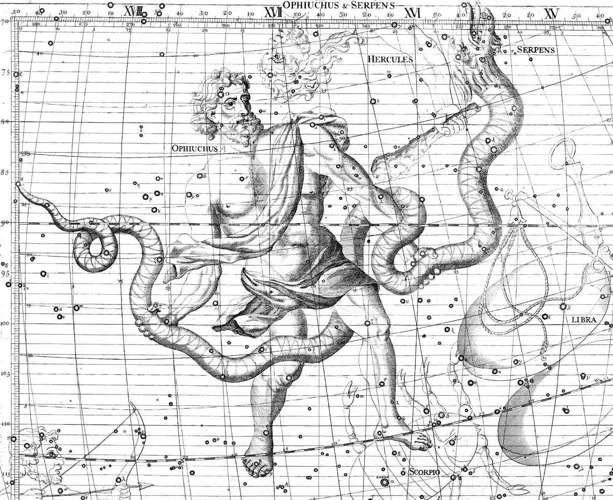
of Mesopotamian mythology are captivating tales that offer insights into the origin of the universe and the gods themselves. One of the most famous creation myths is the Enuma Elish, also known as the Epic of Creation. This myth describes the battle between the gods and the monstrous sea dragon, Tiamat. Through a series of epic events, the god Marduk emerges victorious and becomes the supreme ruler of the cosmos.
Another prominent creation myth is the Atrahasis, which tells the story of a great flood sent by the gods to wipe out humanity due to their disobedience. Atrahasis, the hero of the story, is warned by the god Enki and instructed to build a boat to save himself, his family, and various animals. After the floodwaters subside, a new order is established, and Atrahasis becomes the ancestor of all humankind.
These creation myths not only provide explanations for the origins of the world but also showcase the complex relationships between gods and humans. They capture the beliefs and worldview of the ancient Mesopotamian people, offering valuable insights into their understanding of the divine forces at work in the universe.
The Pantheon of Gods and Goddesses
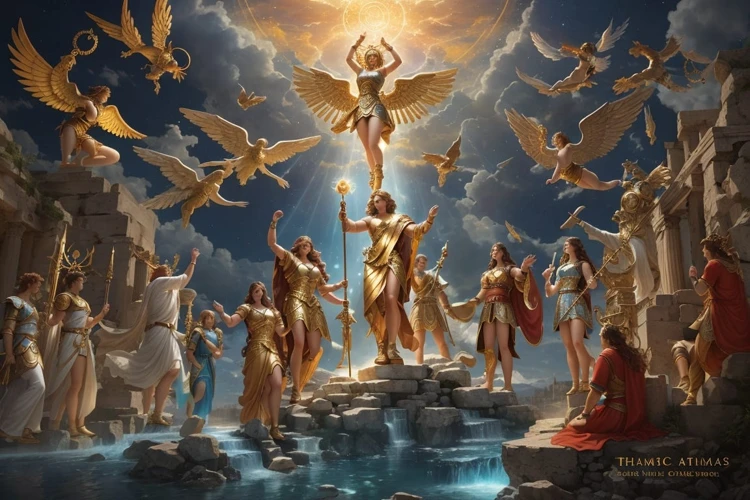
The Mesopotamian pantheon is a diverse assembly of gods and goddesses, each with their own unique powers and domains of influence. Anu, known as the Sky God, is revered as the supreme ruler of the gods. He holds power over the heavens and is associated with the celestial realm. Then there is Enlil, known as the Lord of the Wind, who controls the forces of nature and is often associated with storms and agriculture.
Inanna, the Queen of Heaven and Earth, is a prominent goddess associated with love, fertility, and war. Her dual nature encompasses both benevolence and destructive power. Another significant deity is Marduk, the Supreme God of Babylon, who defeats the chaos dragon Tiamat in the creation myth and brings order to the universe. Marduk becomes the patron deity of Babylon and is considered one of the most powerful among the gods.
Each god and goddess in the Mesopotamian pantheon has their own stories, roles, and unique qualities. They interact with each other, humans, and various natural forces, shaping the destiny of the world. Exploring the pantheon allows us to understand the complex belief system of the ancient Mesopotamians and their reverence for the divine beings who held sway over different aspects of life.
Regional Deities
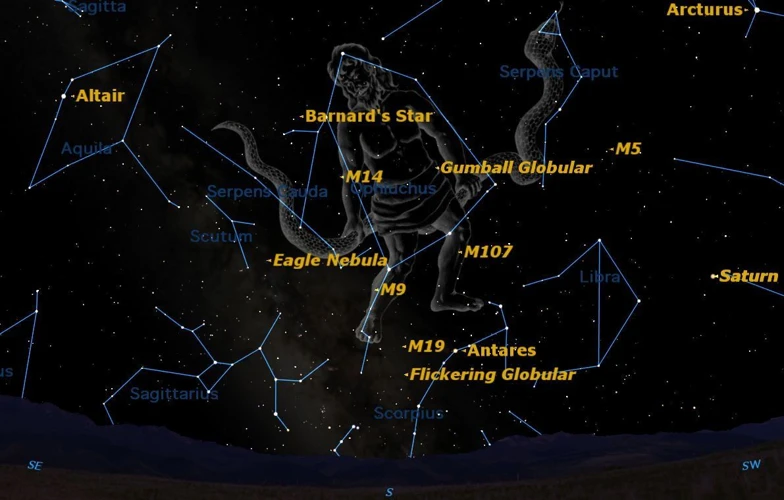
In addition to the major gods and goddesses, Mesopotamian mythology also features a host of regional deities who hold significance in specific cities or regions. One such deity is Nanna, the Moon God of Ur. Nanna was highly revered in the city of Ur and was believed to control the cycles of the moon, offering blessings of fertility and protection.
Another prominent regional deity is Shamash, the Sun God and the Judge. Shamash was worshipped for his role as the divine judge who maintained order and justice in society. He was also considered the patron of law, providing guidance to kings and enforcing moral standards.
The regional deities played a vital role in the lives of the people, offering protection, guidance, and blessings specific to their domains. Their worship often involved elaborate rituals and offerings to ensure the well-being and prosperity of the respective cities or regions they presided over.
As you explore the realm of Mesopotamian mythology, you will encounter these fascinating regional deities, each with their own unique powers and responsibilities. Their stories and influence provide further insights into the religious beliefs and practices of the ancient Mesopotamian civilization.
The Underworld
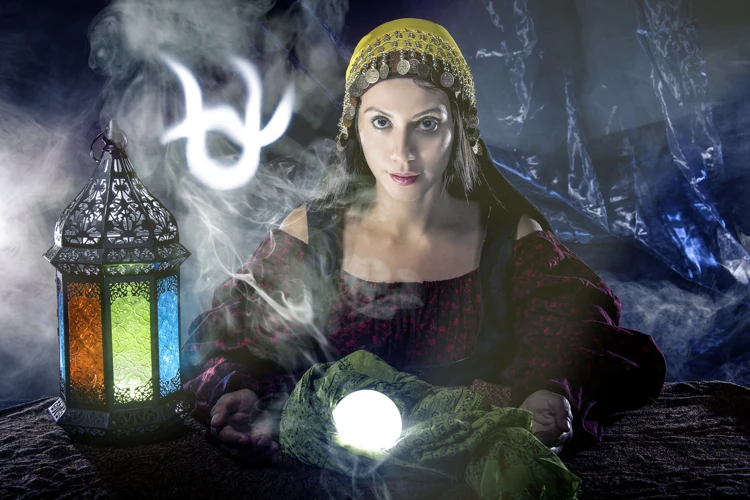
In Mesopotamian mythology, the Underworld plays a significant role as the realm where the deceased journey after death. The ruler of the Underworld is the powerful goddess Ereshkigal. She is often depicted with a half-human, half-serpent body, symbolizing her connection to the earth and the chthonic realm. Ereshkigal’s domain is known as Irkalla, a place of darkness and sorrow where the souls of the dead reside.
Accompanying Ereshkigal in the Underworld is her husband Nergal, the god of war and plague. Nergal is often portrayed as a lion-headed figure, representing strength and ferocity. As the god of war, he holds a prominent role in the Underworld, overseeing the punishments inflicted upon the souls of the deceased.
In the complex cosmology of Mesopotamian mythology, the Underworld serves as a foil to the world of the living, providing a contrast between life and death, light and darkness. The beliefs surrounding the Underworld and its deities shape the Mesopotamians’ understanding of the afterlife and the consequences of one’s actions in the mortal realm.
Deities in Daily Life
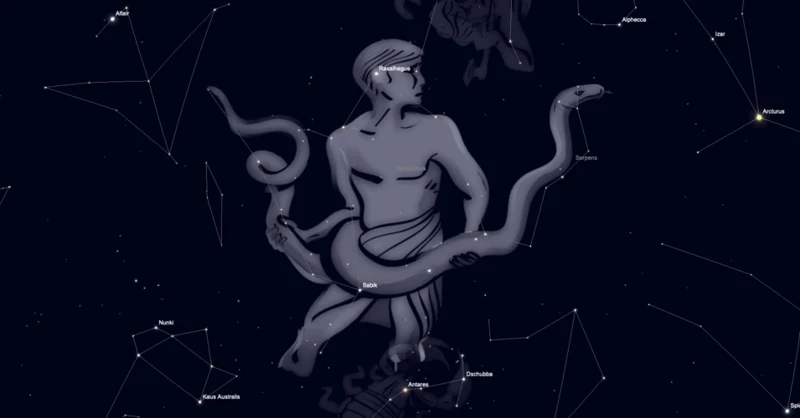
The deities in Mesopotamian mythology played a significant role in the daily lives of the ancient people. One of the most prominent goddesses was Ishtar, the goddess of love and war. She was revered and worshipped for her power to bring about passion and desire, as well as protection in times of strife. Ishtar’s cult was widespread, and her temples were centers of social and religious life, where offerings and prayers were made to seek her blessings.
Another important god in daily life was Ea, the god of wisdom and magic. He was believed to possess vast knowledge and was often invoked for guidance and protection. Ea was regarded as the patron deity of artisans, craftsmen, and healers, as his wisdom and magical abilities were associated with various practical skills.
People sought the favor of these deities through rituals, prayers, and offerings. Temples were constructed as sacred spaces where individuals could connect with the divine and seek blessings or guidance. The beliefs and rituals surrounding these deities permeated all aspects of everyday life, from marriage ceremonies and childbirth to agricultural practices and business ventures. The influence of the deities was deeply ingrained in the ancient Mesopotamian society, shaping their worldview and providing a sense of comfort and reassurance.
Conclusion
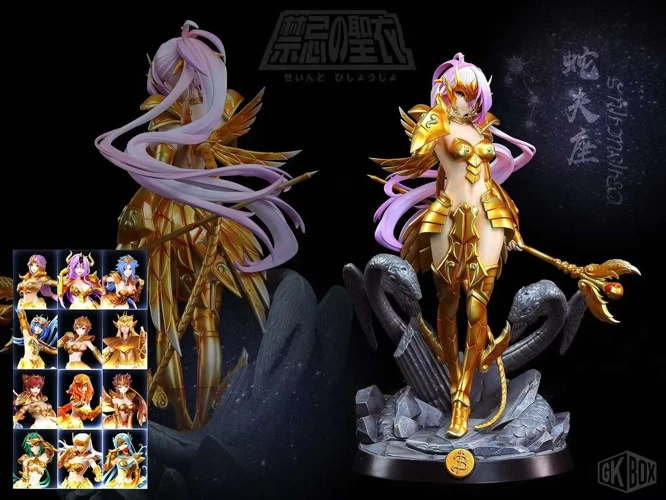
As we reach the end of this comprehensive guide to the deities of Mesopotamian mythology, we are left in awe of the intricate and diverse pantheon that shaped the ancient civilization. From the creation myths that explain the origins of the universe and the gods, to the regional deities and their influence on daily life, Mesopotamian mythology offers a fascinating glimpse into the beliefs and values of the people of that time.
Through the stories of mighty gods such as Anu, Enlil, Inanna, and Marduk, we see the complexity of divine power and the vast range of their domains. The underworld, ruled by Ereshkigal and feared by all, adds an element of mystery and darkness to the pantheon.
Furthermore, the deities played crucial roles in the lives of everyday people. Ishtar, the goddess of love and war, was both feared and revered. Ea, the god of wisdom and magic, offered guidance and protection to those seeking knowledge.
Finally, as we reflect on the myths and tales that make up Mesopotamian mythology, we can appreciate the immense cultural significance they held for the ancient civilization. These stories not only provided answers to fundamental questions about the nature of the world but also shaped the religious and social practices of the people.
In conclusion, Mesopotamian mythology stands as a testament to the imaginative and complex belief systems of the ancient Mesopotamians. Exploring the deities, creation myths, regional gods, and their impact on daily life offers a profound understanding of the ancient civilization’s spiritual and cultural foundations.
Frequently Asked Questions

1. What is the significance of the Enuma Elish creation myth?
The Enuma Elish creation myth holds great cultural and religious significance as it provides the Mesopotamians with a framework for understanding the origin of the universe and the rise of their chief deity, Marduk.
2. How does the Atrahasis flood myth compare to other flood myths?
The Atrahasis flood myth shares similarities with other flood myths found in different cultures, such as the story of Noah’s Ark in the biblical tradition. These stories highlight the common human fascination with catastrophic deluges and the need for divine intervention to preserve life.
3. Who are the main characters in the Enuma Elish creation myth?
The main characters in the Enuma Elish creation myth include the sea goddess Tiamat and her consort Apsu, as well as the god Marduk, who defeats Tiamat and establishes order in the cosmos.
4. What does the Atrahasis flood myth reveal about ancient Mesopotamian beliefs?
The Atrahasis flood myth reflects the ancient Mesopotamian belief in the power and unpredictable nature of the gods. It also emphasizes the importance of human obedience and the consequences of disobedience.
5. Are there similar creation myths in other ancient cultures?
Yes, creation myths are found in various ancient cultures worldwide. Each civilization had its own unique interpretations of the origins of the world and its gods.
6. Is the Enuma Elish considered the oldest recorded creation myth?
The Enuma Elish is one of the oldest recorded creation myths, dating back to the Babylonian period. However, it is important to note that there may be older myths that have not yet been discovered.
7. How does the Enuma Elish explain the creation of humanity?
In the Enuma Elish, humanity is created when Marduk, after defeating Tiamat, kills the god Kingu and uses his blood to fashion humans. These humans are then destined to serve the gods.
8. What role does Marduk play in the Enuma Elish creation myth?
Marduk plays a central role in the Enuma Elish creation myth. He is chosen by the gods to confront and defeat the chaotic forces of Tiamat, establishing himself as the supreme god and the ruler of the cosmos.
9. How does the Atrahasis flood myth differ from the biblical story of Noah’s Ark?
While both stories share similarities, such as the occurrence of a destructive flood, the Atrahasis flood myth has a more polytheistic worldview and portrays multiple gods involved in the decision to flood the earth.
10. What lessons can we learn from the Mesopotamian creation myths?
The Mesopotamian creation myths remind us of the profound human need to make sense of our existence and the natural world. They also highlight themes of obedience, consequences for disobedience, and the complex relationship between gods and humans.
References
Frequently Asked Questions

1. What is Mesopotamian mythology?
Mesopotamian mythology refers to the religious beliefs and stories of the ancient civilizations that inhabited the region of Mesopotamia, which is located in present-day Iraq. It is one of the oldest recorded mythologies in the world and provides insight into the cultural and spiritual practices of ancient Mesopotamians.
2. How did the Mesopotamians believe the world was created?
The Mesopotamians had different creation myths. The most famous one is called Enuma Elish, which tells the story of how the world was created through a battle between the gods. According to this myth, the god Marduk emerged as the supreme god after defeating the chaotic goddess Tiamat.
3. Who are the main gods and goddesses in Mesopotamian mythology?
The Mesopotamian pantheon consists of numerous gods and goddesses, each with their unique roles and domains. Some of the prominent deities include Anu, the god of the sky; Enlil, the lord of the wind; Inanna, the queen of heaven and earth; and Marduk, the supreme god of Babylon.
4. What is the significance of the god Enlil in Mesopotamian mythology?
Enlil is considered one of the most powerful gods in Mesopotamian mythology. He is associated with the wind, storms, and agriculture. Enlil played a crucial role in the creation of humans and was believed to hold authority over the fates of both gods and mortals.
5. Who is the goddess Ishtar and what were her roles?
Ishtar was a prominent goddess in Mesopotamian mythology. She was associated with love, beauty, fertility, and war. Ishtar was revered as the divine protector of cities and was believed to bring prosperity and protection to those who honored her.
6. What is the significance of the god Ea in Mesopotamian mythology?
Ea, also known as Enki, was the god of wisdom, magic, and freshwater in Mesopotamian mythology. He played a crucial role in human creation and was known as a benevolent deity who provided guidance and knowledge to humans.
7. Who rules the Underworld in Mesopotamian mythology?
In Mesopotamian mythology, the Underworld is ruled by Ereshkigal, the queen of the Underworld. She is a powerful and feared goddess associated with death and the afterlife. Ereshkigal governs the realm of the dead and enforces its laws and punishments.
8. Who is the Moon god in Mesopotamian mythology?
The Moon god in Mesopotamian mythology is Nanna, also known as Sin. Nanna was regarded as a wise and gentle deity who governed the night and influenced the tides. He was highly worshipped in the city of Ur and associated with fertility and divination.
9. What are some notable myths involving Mesopotamian deities?
One notable myth is the epic of Atrahasis, which tells the story of a great flood sent by the gods. Another well-known myth is the descent of the goddess Inanna to the Underworld, where she is stripped of her powers and undergoes a transformative journey.
10. How did the Mesopotamians interact with their deities in daily life?
The Mesopotamians believed in maintaining a strong relationship with their deities through rituals, offerings, and prayers. Temples were central to their religious practices, and priests played a vital role in facilitating communication between humans and the gods. Each deity had specific rituals and festivals dedicated to them.
References
- Mesopotamian Mythology: A Captivating Guide to Ancient …
- Ancient Mesopotamian Gods and Goddesses – Technical …







